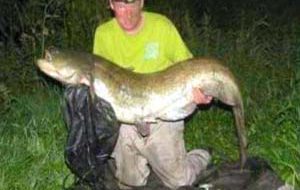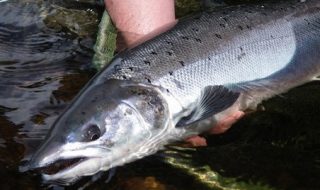Following the identification of the pesticide chlorpyrifos as the cause of last month’s pollution of a 15kms section of the upper Kennet between Marlborough and Hungerford the Angling Trust has written to Environment minister Richard Benyon calling for the chemical to be withdrawn from domestic use.
It has been estimated that as little as half a cupful poured down a local drain and entering the river via the Marlborough Sewage treatment works resulted in the almost complete wipe out of macro invertebrates in the affected stretch.
Chlorpyrifos is regularly used on lawns and golf courses and to tackle insects on crops and some soft fruits.
It is the same pollutant that wiped out a large section of the River Roding in 1985, the River Wey in 2002 and 2003 and led to a significant fish kill on the Sussex Ouse in 2001. It was banned in Singapore in 2009 for use in termite control in soil and the United States phased out chlorpyrifos for use in buildings and residential homes and pre-construction sites from 2001 due to public health and environmental concerns.
The US Environmental Protection Agency (EPA) has moved to limit the use of the chemical near salmon rivers because of possible damage to fish and has been petitioned to introduce a total ban following reports that it can cause damage to human health.
There is concern amongst the suppliers that a current review of the pesticide by the UK’s Chemical Regulations Directorate could lead to the government imposing tougher restrictions on its sale and use. The industry funded ‘Say No to Drift’ campaign states that “Continued availability of chlorpyrifos is under threat due to more stringent EU environmental standards to further protect the aquatic environment and meet regulatory requirements.”
Angling Trust Campaigns Chief’s Martin Salter letter to the minister refers to the easy availability of chlorpyrifos saying:
“It took me no more than a couple of minutes to find where to order it on-line with a next day delivery for around £33.00 and there were several other suppliers advertising for domestic customers on-line. Interestingly whilst reference is made to compliance with HSE codes for the use of this chemical by professionals no such obligation appears to apply to domestic users.”
Martin goes on to say:
“Experience from other countries as well as the catalogue of environmental disasters caused by chlorpyrifos, of which the upper Kennet is but the latest, must surely tell us that the current controls are simply not fit for purpose. In fact the Angling Trust wants to know why a lethal chemical like chlorpyrifos is allowed to be used anywhere near a river or watercourse.
Apparently the 15 kms wipeout of invertebrates between Marlborough and Hungerford may have been caused by as little as a couple of spoonfuls and was almost certainly the result of an irresponsible domestic disposal. We hope you will agree that the the sooner we follow the lead of Singapore and America and ban the domestic use of chlorpyrifos the better off our rivers will be.”
He added:
“As you know at this stage we are not campaigning for an outright ban but for chlorpyrifos to be removed from general sale and for its use to be restricted to trained professionals only and operating under new and more stringent conditions that include restrictions on its use anywhere near watercourses of any size.
Finally, we are worried that the problems with the disposal of chlorpyrifos might just be the tip of a chemical iceberg with garden sheds and other storage places housing a range of substances that could prove lethal to aquatic life. In the past there have been a number of initiatives advising people how they can dispose of all unused chemicals and empty containers responsibly. We feel it is time that these arrangements are reviewed.”





